
How to Use SPDT Relay Module: Examples, Pinouts, and Specs
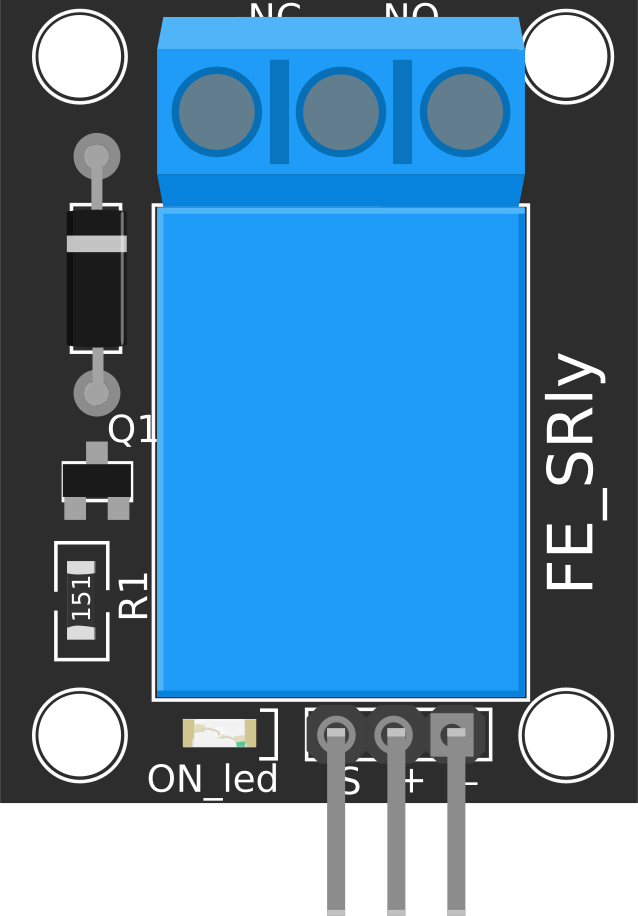
 Design with SPDT Relay Module in Cirkit Designer
Design with SPDT Relay Module in Cirkit DesignerIntroduction
The Single Pole Double Throw (SPDT) relay module is an electromechanical switch designed to control circuits using either low-power or high-power signals. It features three terminals: Common (COM), Normally Open (NO), and Normally Closed (NC). This configuration allows the relay to switch between two circuits, making it a versatile component for various applications.
Explore Projects Built with SPDT Relay Module
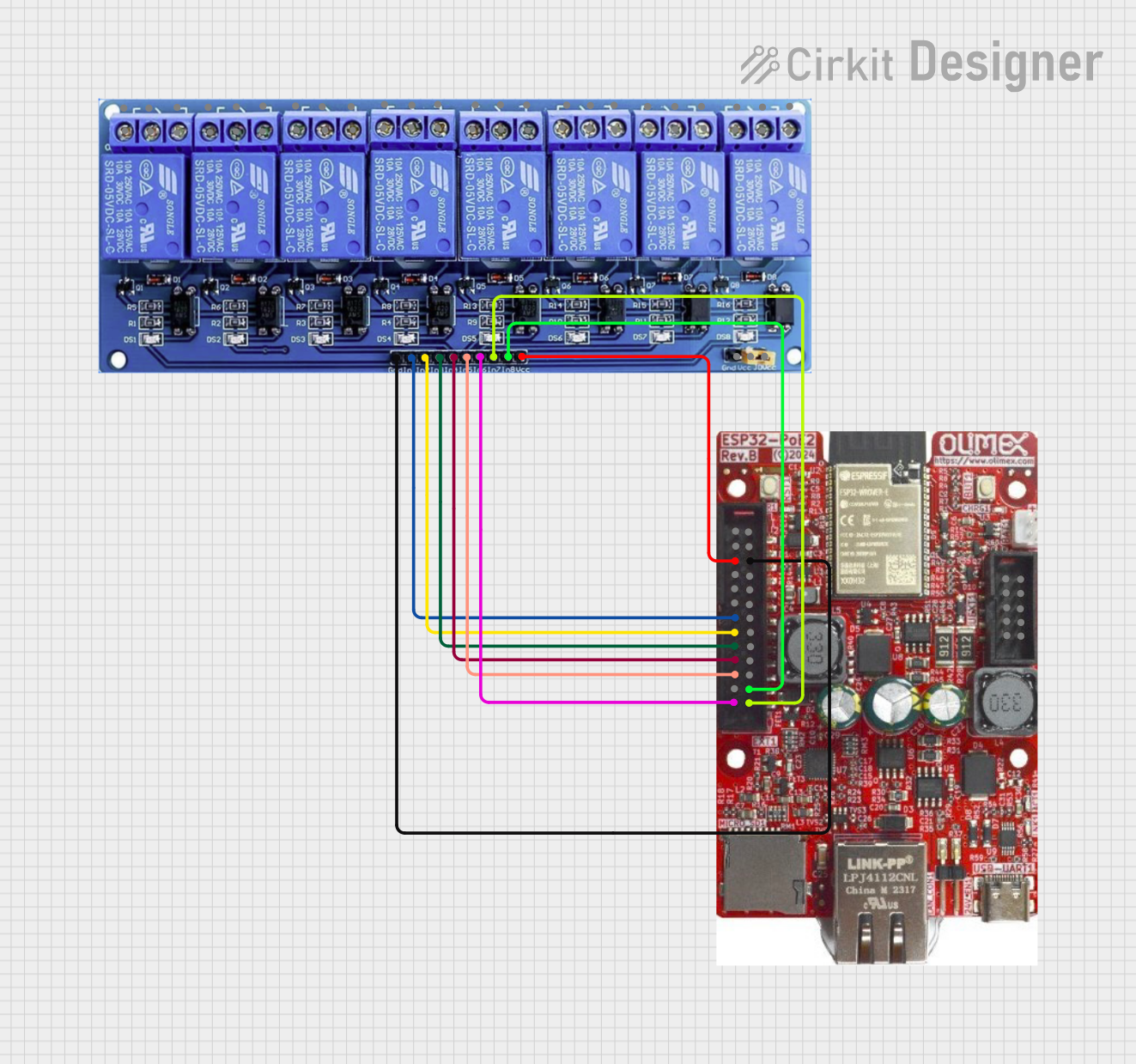
 Open Project in Cirkit Designer
Open Project in Cirkit Designer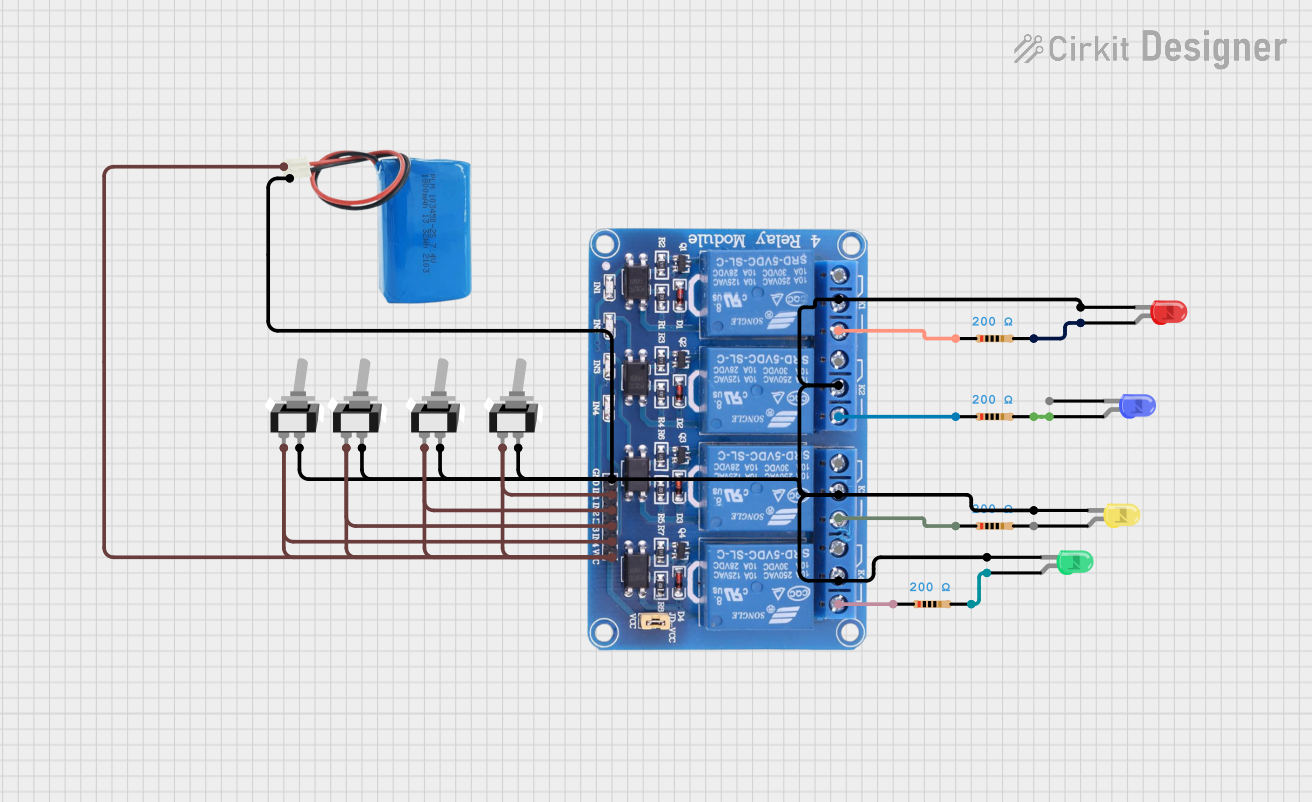
 Open Project in Cirkit Designer
Open Project in Cirkit Designer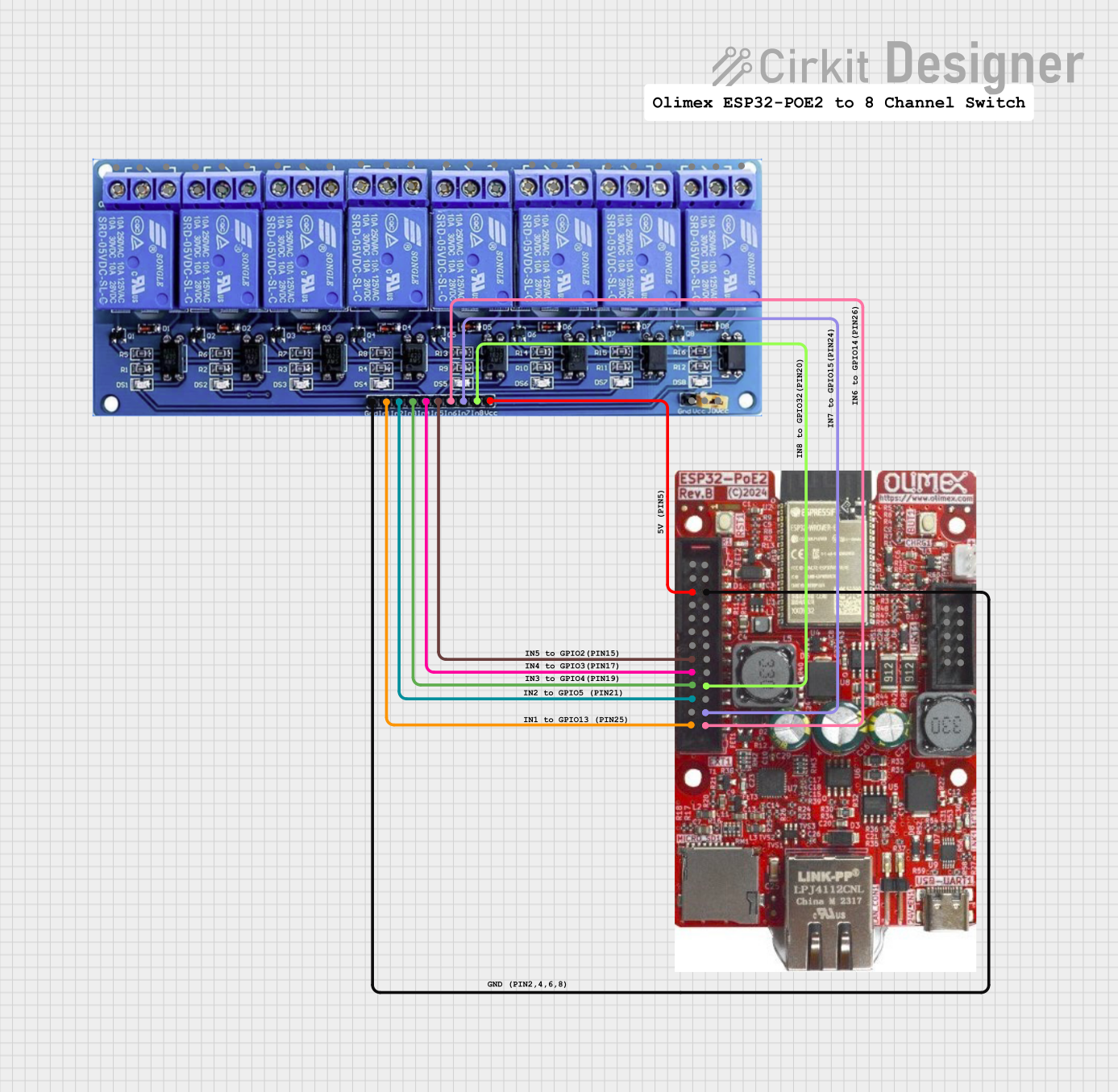
 Open Project in Cirkit Designer
Open Project in Cirkit Designer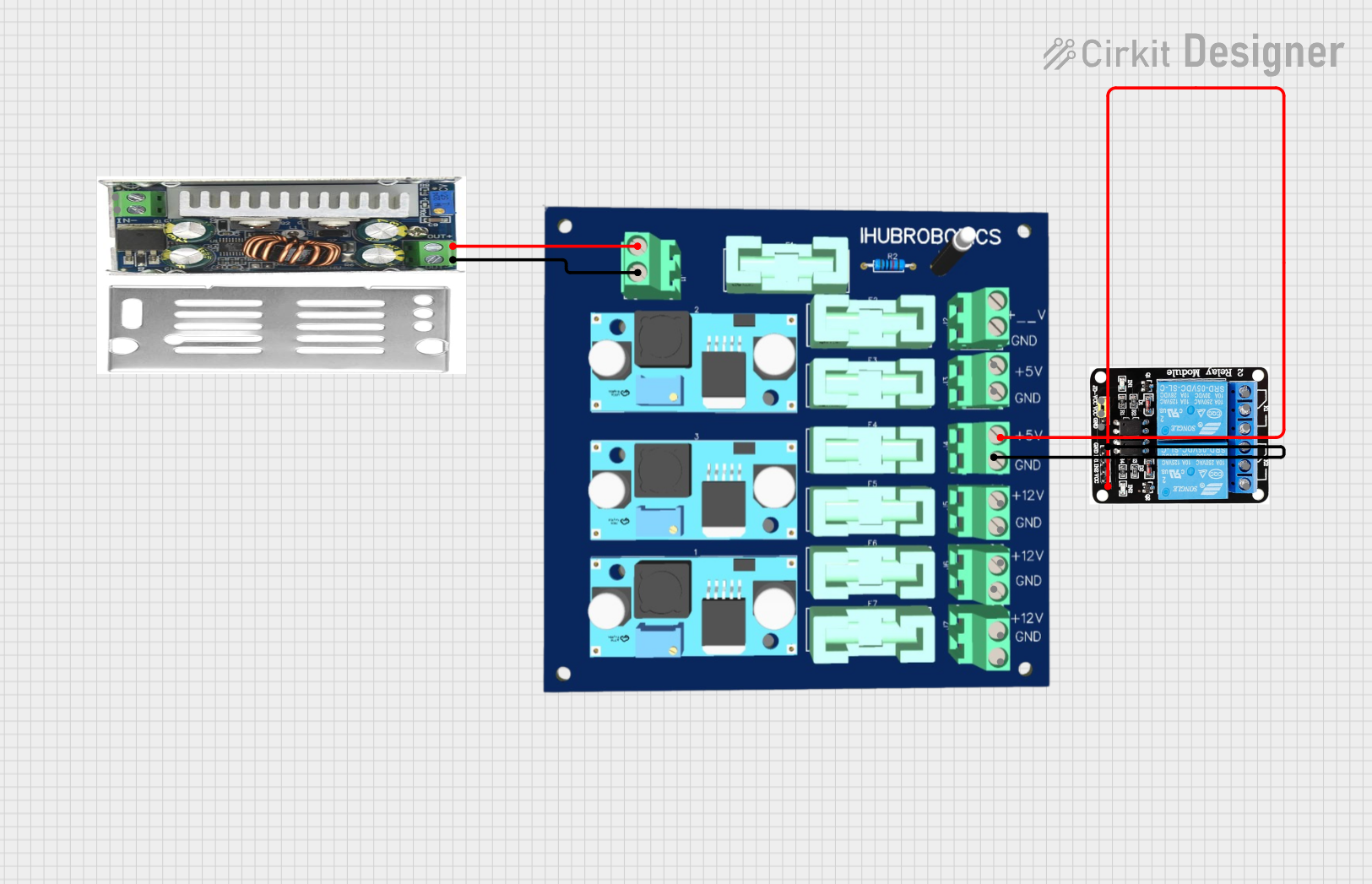
 Open Project in Cirkit Designer
Open Project in Cirkit DesignerExplore Projects Built with SPDT Relay Module

 Open Project in Cirkit Designer
Open Project in Cirkit Designer
 Open Project in Cirkit Designer
Open Project in Cirkit Designer
 Open Project in Cirkit Designer
Open Project in Cirkit Designer
 Open Project in Cirkit Designer
Open Project in Cirkit DesignerCommon Applications and Use Cases
- Home Automation: Controlling lights, fans, or appliances remotely.
- Industrial Automation: Switching high-power devices using low-power control signals.
- Microcontroller Projects: Interfacing with Arduino, Raspberry Pi, or other microcontrollers.
- Motor Control: Switching between forward and reverse motor directions.
- Safety Systems: Isolating circuits to prevent damage or hazards.
Technical Specifications
Key Technical Details
- Operating Voltage: 5V DC (common for most modules, but check your specific model)
- Trigger Voltage: Typically 3.3V to 5V (compatible with microcontrollers like Arduino)
- Maximum Switching Voltage: 250V AC or 30V DC (varies by model)
- Maximum Switching Current: 10A (varies by model)
- Relay Type: SPDT (Single Pole Double Throw)
- Isolation: Optocoupler isolation (on some modules) for safe operation
- Indicator LED: Built-in LED to indicate relay activation
Pin Configuration and Descriptions
The SPDT relay module typically has the following pins:
| Pin Name | Description |
|---|---|
| VCC | Power supply pin (5V DC) |
| GND | Ground connection |
| IN | Control signal input (activates the relay when HIGH) |
| COM | Common terminal for the load circuit |
| NO | Normally Open terminal (connected to COM when the relay is activated) |
| NC | Normally Closed terminal (connected to COM when the relay is not activated) |
Usage Instructions
How to Use the SPDT Relay Module in a Circuit
- Power the Module: Connect the VCC pin to a 5V DC power source and the GND pin to ground.
- Control Signal: Connect the IN pin to a digital output pin of a microcontroller (e.g., Arduino).
- Load Connection:
- Connect the load's power source to the COM terminal.
- Connect the load to either the NO or NC terminal, depending on the desired behavior:
- NO: The load is powered only when the relay is activated.
- NC: The load is powered when the relay is not activated.
- Activate the Relay: Send a HIGH signal (e.g., 5V) to the IN pin to activate the relay and switch the load.
Important Considerations and Best Practices
- Isolation: Ensure proper isolation between the control circuit and the high-power load to prevent damage.
- Flyback Diode: If controlling an inductive load (e.g., motor), use a flyback diode across the load to protect the relay from voltage spikes.
- Power Ratings: Do not exceed the relay's voltage and current ratings to avoid overheating or damage.
- Indicator LED: Use the built-in LED to verify relay activation during testing.
Example: Connecting to an Arduino UNO
Below is an example of how to control an SPDT relay module using an Arduino UNO:
// Define the relay control pin
const int relayPin = 7; // Connect the IN pin of the relay module to pin 7
void setup() {
pinMode(relayPin, OUTPUT); // Set the relay pin as an output
digitalWrite(relayPin, LOW); // Ensure the relay is off at startup
}
void loop() {
// Turn the relay ON
digitalWrite(relayPin, HIGH); // Send a HIGH signal to activate the relay
delay(5000); // Keep the relay ON for 5 seconds
// Turn the relay OFF
digitalWrite(relayPin, LOW); // Send a LOW signal to deactivate the relay
delay(5000); // Keep the relay OFF for 5 seconds
}
Troubleshooting and FAQs
Common Issues and Solutions
Relay Not Activating:
- Cause: Insufficient control signal voltage.
- Solution: Ensure the IN pin receives a HIGH signal (3.3V or 5V, depending on the module).
Load Not Switching:
- Cause: Incorrect wiring of the load to the COM, NO, or NC terminals.
- Solution: Double-check the load connections and ensure they match the desired behavior (NO or NC).
Relay Clicking but No Load Response:
- Cause: Load exceeds the relay's voltage or current rating.
- Solution: Verify the load's specifications and ensure they are within the relay's limits.
Microcontroller Resetting When Relay Activates:
- Cause: Voltage spikes or insufficient power supply.
- Solution: Use a flyback diode for inductive loads and ensure the power supply can handle the relay's current draw.
FAQs
Can I use the SPDT relay module with a 3.3V microcontroller?
- Yes, if the relay module supports 3.3V control signals. Otherwise, use a level shifter or transistor circuit.
What is the purpose of the built-in LED?
- The LED indicates the relay's activation status, making it easier to debug and test.
Can I control multiple relays with one microcontroller?
- Yes, as long as each relay is connected to a separate digital output pin and the microcontroller can supply sufficient current.
Is the relay safe for high-power applications?
- Yes, but ensure the load does not exceed the relay's voltage and current ratings. Use proper isolation for safety.